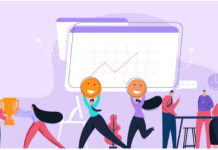The HR personnel in any organisation work hard to put the right talent in place. They also help arrange for the new entrants to be inducted, trained and settled in. Yet, with the number of job hoppers going up, it is common to find workers quitting an organisation in less than two years. Although the work of sorting resumes, shortlisting the eligible candidates and scheduling interviews has all been taken over by AI, reducing the burden on HR, the quitting of an employee is always bad news.
After all, time and effort do go into interviews, induction programmes, training sessions, assessments, appraisals and the works. Not to mention the documentation and formalities to be completed at the time of joining and leaving. Imagine having to go through the process repeatedly and frequently!
If only HR personnel could gauge what was going on in their employees’minds. They could take preventive measures to reduce attrition. Why do workers decide to quit so fast?
According to a survey report by Gallup, called State of the Global Workplace, 85 per cent employees are disengaged at work. This disengagement results in low productivity, which translates into losses of approximately $7 trillion. The report reveals that 18 per cent employees are actively disengaged at work, while 67 per cent are not engaged. If the majority of the workforce comprises disengaged employees, the organisation will be expecting the best from workers who do not care for the organisation; employees who are indifferent or are actually looking out for better opportunities.
Vantage Circle offers multiple employee engagement solutions using cutting-edge technology that helps you stay ahead of the game.
Clearly, the solution lies in engaging the employees. But many in the HR community are not sure of using AI to enhance employee experience and engagement. Here are the reasons that will help them make up their minds.
Most of the employees leave for reasons as simple as their colleagues being less friendly, or because of uncommunicative managers, and even due to lack of appropriate training. Just a pat on the back from a senior or a smile from a team member or a helping hand from a co-worker can work wonders for the morale of employees and stop them from considering putting in their papers.
According to a survey by BambooHR, 23 per cent of workers who quit within six months of joining admit they would have stayed had their managers been more communicative.
So keeping employees motivated and assured that they are valued and needed has become the priority for HR. Artifical intelligence is already taking care of a lot of the processes involved in hiring employees and seeing them through their exit. But can AI also reduce attrition?
Since AI is already being able to help HR hire the best and most suitable talent with unimaginable speed, is it too much to expect it to also improve employee engagement?
Apparently not! AI can be relied on to improve employees’ experience throughout their employment lifecycle. It can actually help keep the workforce happy. Hard to believe, but that is what the new automated era has come to.
Here is how.
It is true that technological advancement has eaten into the number of jobs available. But it has also provided many tools that can help enhance employee engagement.
For instance, an algorithm such as Vibe is able to analyse keywords and emojis exchanged between employees to gauge the mood of the staff. The analysis helps understand whether team members are pleased and satisfied, or annoyed, stressed and discontented.
Keen is yet another tool that helps suss the level of employee engagement. It searches through employees’ e-mails to reveal words and their usage patterns to interpret them as positive or negative emotions.
Other communication analysis AI tools, such as ADP Compass, Kanjoya and Humu, study the morale of the employees and suggest simple ways to push it. Some of these tools also offer feedback to the managers as well as employees on the areas that they require to work on and improve. Such tools have actually resulted in improving the efficiency and productivity of the workforce.
If AI is implemented effectively, it will become easy to identify the employees who need a pat on their back, or workers who could do with some positive feedback and teams that require rewards and recognition. Accordingly, the appropriate action can be taken so that there is a higher level of satisfaction and employees are not pushed to the extent of thinking of switching jobs.
Simply put, AI can be effectively used to keep workers happy.
Value our content... contribute towards our growth. Even a small contribution a month would be of great help for us.
Since eight years, we have been serving the industry through daily news and stories. Our content is free for all and we plan to keep it that way.
Support HRKatha. Pay Here (All it takes is a minute)




































